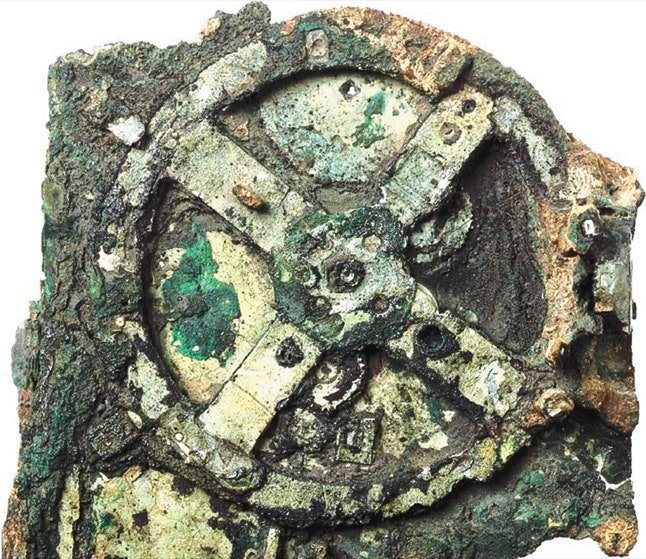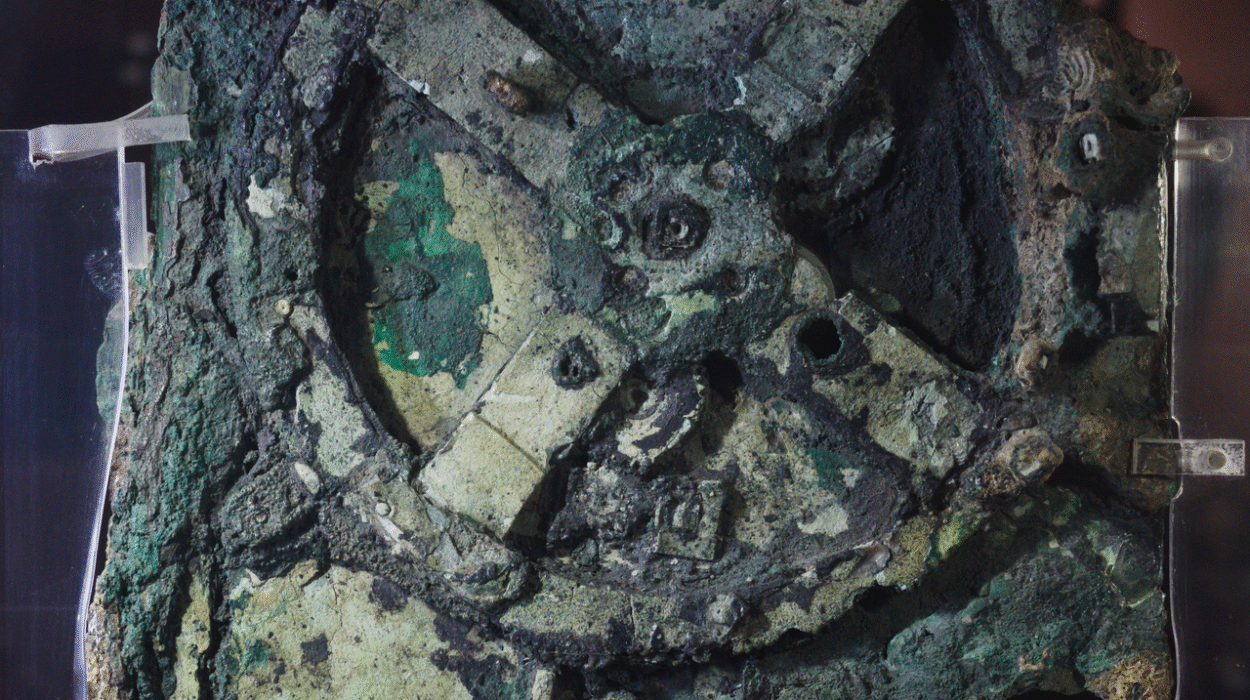History, we are told, follows a linear path—civilizations rise, inventions emerge, and knowledge accumulates like bricks stacked by time. But every so often, something surfaces from the earth, the sea, or the pages of a forgotten manuscript that refuses to fit into the accepted timeline. These artifacts are strange. Out of place. Anomalies. And they whisper a dangerous question: Who really made these?
Mainstream historians often dismiss such objects as hoaxes, misinterpretations, or coincidences. But others—archaeologists, researchers, and curious minds not bound by orthodox frameworks—dare to look deeper. These are not just random curiosities. They suggest that the past may be far richer, stranger, and more advanced than we have been taught. This article explores some of the most compelling and confounding artifacts ever discovered—artifacts that defy explanation, challenge academic dogma, and ignite our deepest curiosities.
Let us journey through time, beyond the boundaries of the known, into the mysterious terrain of forbidden archaeology.
The Antikythera Mechanism: Ancient Greece’s Impossible Computer
In 1901, sponge divers off the coast of the Greek island of Antikythera found something astonishing in a Roman-era shipwreck. Amidst the corroded bronze statues and amphorae was a lump of calcified metal, ignored for years before X-rays revealed its true nature.
Inside were dozens of interlocking gears—some as small as a fingernail—arranged in a precision mechanical structure. What scientists eventually realized is that the Antikythera Mechanism is an analog computer designed more than 2,000 years ago. It could predict solar eclipses, track the cycles of the moon, and even account for the irregular orbit of the moon through a differential gear—technology not officially rediscovered until the 16th century.
Who made such a device? How did Hellenistic engineers manage to produce something so advanced—and why did that technology disappear for more than a thousand years? The mechanism was likely the product of a brilliant, forgotten mind—perhaps influenced by the school of Archimedes—but it defies the established notion that complex machinery began only in the Renaissance.
Some researchers suggest the mechanism hints at an unrecorded lineage of technological knowledge, lost in the collapse of empires. If so, what other devices might have existed and vanished into the sands of time?
The Baghdad Battery: Electricity in the Ancient World?
In 1938, German archaeologist Wilhelm König discovered a clay jar in the ruins of a Parthian village near Baghdad. Inside were copper cylinders and iron rods. When these jars were recreated and filled with acidic liquid, they produced a low-voltage electric current. The result was dubbed the Baghdad Battery.
Mainstream archaeology labels the object as a possible galvanic cell, but insists that ancient civilizations had no knowledge of electricity. The battery theory is often dismissed or played down as a coincidence or misinterpretation. But what if the people of ancient Mesopotamia really had rudimentary electrical devices?
Some fringe researchers propose that such batteries might have been used for electroplating, a process to coat one metal with another—explaining certain ancient Egyptian artifacts that seem to display mysterious levels of precision and metal bonding. Others speculate on spiritual or medical uses.
Whatever its purpose, the Baghdad Battery raises a tantalizing possibility: that electricity was not “discovered” in the modern age, but rediscovered. Could ancient cultures have possessed basic electrical understanding, lost during the decline of their civilizations?
The Piri Reis Map: A Glimpse of the Ice-Free Antarctic?
In 1513, Ottoman admiral and cartographer Piri Reis compiled a world map using older source materials. His surviving map shows parts of Europe, Africa, and—most controversially—the coastline of Antarctica, centuries before it was officially discovered.
Even more intriguing, the portion identified as Antarctica appears to be free of ice, depicting a subglacial topography only confirmed by seismic radar in the 20th century. Piri Reis himself wrote in the map’s annotations that he had used ancient maps going back to the time of Alexander the Great.
Could this be evidence of a long-lost seafaring civilization with the capacity to chart the globe? Some suggest the map may preserve remnants of knowledge from a forgotten epoch—possibly the mythical Atlantis, or a prehistoric culture predating the last Ice Age.
Academic critics argue that the resemblance to Antarctica is coincidental or based on misinterpretation. But the precision and detail of the map, especially for the time, are difficult to dismiss. The question remains: how did Piri Reis—or the sources he relied on—depict lands they could not possibly have seen?
The Dropa Stones: Messages from the Sky?
In the late 1930s, a Chinese archaeological team reportedly discovered a series of peculiar stone discs in the Baian-Kara-Ula mountains near the border of Tibet. The Dropa Stones, as they became known, were approximately one foot in diameter with a perfectly round hole in the center and spiral grooves etched across their surface.
Some claimed these grooves contained microscopic characters—writing so fine it required magnification to discern. According to controversial reports, the symbols were translated to tell the story of a spacefaring people—the Dropa—who crash-landed on Earth thousands of years ago.
Mainstream historians consider the entire Dropa story to be a hoax or legend. Indeed, much about the original expedition, the translations, and the alleged artifacts remains unverified. But the tale persists because of one compelling idea: that intelligent beings, perhaps from beyond Earth or from a forgotten terrestrial civilization, may have left behind clues to their presence in ways we cannot yet decode.
Whether real or fabricated, the Dropa Stones ignite the imagination and point to a recurring theme in human history—stories of sky people, ancient astronauts, and knowledge descending from the heavens.
The Iron Pillar of Delhi: Metallurgy Beyond Its Time
Standing over 23 feet tall in the heart of Delhi, the Iron Pillar of India is over 1,600 years old and a metallurgical marvel. Composed almost entirely of pure wrought iron, it has resisted rust and corrosion despite centuries of monsoon rains and exposure to the elements.
How did ancient Indian blacksmiths produce such a high-quality iron structure in an era when even simple iron tools were prone to rapid decay? The pillar is believed to have been erected during the reign of Chandragupta II (375–415 CE), yet its preservation defies what we know of ancient metallurgy.
Some scientists have discovered that the iron contains an unusually high amount of phosphorus and was forged using a technique that passivates corrosion. But this explanation still doesn’t fully account for the structure’s remarkable resilience.
Could this pillar be evidence of an advanced lost science of metallurgy—one that exceeded the capabilities of other civilizations of its time? And if so, where else might this knowledge have been applied?
The London Hammer: A Modern Tool in Ancient Stone?
In 1936, near London, Texas, a couple discovered a hammer encased in rock. At first glance, the tool looked like a typical 19th-century miner’s hammer. But the surrounding rock—according to some estimates—was over 100 million years old.
This so-called London Hammer has sparked intense debate. Skeptics argue that the rock may have formed around the hammer through natural processes in more recent times. Supporters contend that the hammer’s precise craftsmanship, combined with its geological context, suggest a far more enigmatic origin.
If genuine, the London Hammer would completely upend our understanding of history. It would imply either that human-like beings existed long before modern humans—or that some past culture had the ability to manipulate time-worn rock in ways we still don’t understand.
Like many artifacts that challenge conventional timelines, the London Hammer is often dismissed out of hand. But it remains in a gray area—an object that may never find its rightful place in historical orthodoxy.
The Nazca Lines: Giant Glyphs That Can Only Be Seen from Above
Etched into the desert plains of southern Peru are hundreds of massive geoglyphs—sprawling images of animals, plants, and geometric shapes. Some are over 1,000 feet long. These are the Nazca Lines, and they remain one of the most enigmatic ancient creations on Earth.
Made by removing the reddish pebbles of the desert surface to reveal the lighter soil underneath, the lines are virtually invisible from the ground. They can only be fully appreciated from the air, a viewpoint presumably inaccessible to the people who created them around 500 BCE to 500 CE.
Why would an ancient culture build giant images they couldn’t even see? Mainstream theories include astronomical calendars, ceremonial walkways, and ritual sites. But these explanations often feel inadequate. The precision, scale, and purpose of the lines hint at something deeper—possibly an attempt to communicate with beings in the sky.
Some researchers have even suggested that the Nazca civilization had aerial balloons or platforms. Whether intended for gods, celestial beings, or something else entirely, the Nazca Lines remain a beautiful, eerie puzzle carved into the Earth.
The Shigir Idol: The Oldest Wooden Statue on Earth
In 1894, in a Siberian peat bog, workers unearthed a bizarre wooden statue now known as the Shigir Idol. Standing over 9 feet tall, the sculpture is covered in intricate carvings and humanoid faces. When scientists finally dated it using modern techniques, the results stunned the world: it was over 12,000 years old.
This means the Shigir Idol was created not long after the last Ice Age, at a time when humans were thought to be simple hunter-gatherers with no permanent settlements or complex symbolic systems. Yet the idol’s abstract patterns and mysterious symbols suggest a rich symbolic language and possibly a spiritual or cosmological function.
Why would Ice Age peoples invest such time and skill in creating such a monument? What did it represent—and why was it buried with such care?
The Shigir Idol forces us to reconsider our assumptions about prehistoric humanity. Perhaps the symbolic and artistic life of early humans was far more advanced—and more widespread—than we give them credit for.
The Saqqara Bird: A Glider from Ancient Egypt?
Discovered in 1898 in an Egyptian tomb near Saqqara, the Saqqara Bird is a small wooden model shaped like a bird but with features uncannily similar to a modern aircraft: a fuselage-like body, straight wings, and a vertical tail.
Some aeronautical engineers have claimed that, if scaled up, the model could potentially glide. Could the ancient Egyptians have had knowledge of basic flight principles? Mainstream Egyptologists insist the model is simply a stylized bird, possibly a toy or ritual object.
Yet its aerodynamic design raises eyebrows. Why include a vertical stabilizer—a feature not found in birds but essential for aircraft?
While there is no direct evidence that the Egyptians ever built flying machines, the Saqqara Bird tantalizes us with the possibility that they may have understood principles of air resistance, lift, and stability. Was it a forgotten experiment? A model of a divine chariot? Or a relic of an older, lost knowledge?
Conclusion: The Artifacts That Refuse to Be Forgotten
Across continents and centuries, these enigmatic artifacts challenge our understanding of history. They resist easy explanations. They suggest timelines that stretch further back, civilizations more advanced than we imagined, and possibilities that defy academic comfort.
To be clear, not all these objects are proof of lost civilizations or extraterrestrial contact. Some may be misinterpreted, others perhaps clever fakes. But the collective weight of so many anomalies compels us to ask deeper questions.
Why are certain discoveries marginalized or ignored? Who decides which evidence is valid and which is fantasy? And what do we stand to gain—or lose—by opening ourselves to a broader, more mysterious view of our past?
In the end, history is not set in stone. It is written, revised, and rediscovered. The artifacts that don’t fit may not be mistakes. They may be keys. Keys to a version of history that once was, or could have been. A history waiting to be reawakened.



